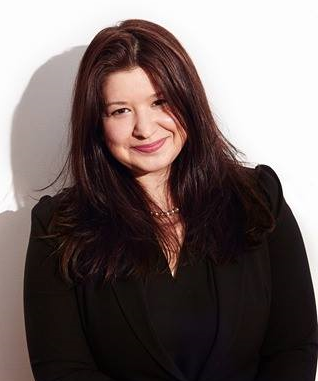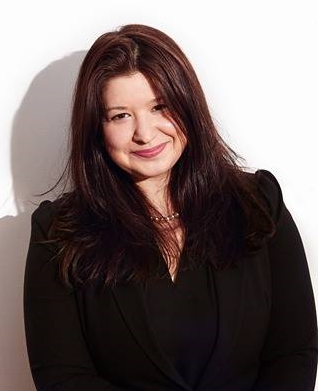
By Dr. Jenny Kay Dupuis
We cannot overlook the narratives of the Indigenous peoples as we think about the delicate issue of truth and reconciliation in school libraries.
For my entire childhood, I was raised in Northern Ontario. Nipissing First Nation is a place that my ancestors have called home for more than 10,000 years. My great-grandfather, Ernest Couchie was one of the longest-serving chiefs of Nipissing First Nation. He was known as a well-respected community leader who embraced the values of humility, honesty, and fairness. The community was his family; in fact, he used his earning from a taxidermy business he also operated to not only provide for his own children, but other children and families who were in need.
In 1928, an Indian Agent came to the house and forcibly removed his children; including my granny, Irene. The Indian Agent took the children further north to the Spanish Residential School. At this school, the children faced isolation, abuse, and were shamed out of speaking the Nbising dialect of Nishnaabemwin.
These horrific acts continued against the children for over 100 years. The last school closed in 1996.
At the same time, many First Nation communities across Canada faced other acts of assimilation and oppression. Many of those stories involve injustices that are buried in legislation and policies that were created to take away our basic human rights including, but not limited to, our culture, our language, and our women and children. At one point in time, community members were prohibited from participating in traditional ceremonies. They had to ask permission and get a pass to leave the reserve. If a First Nation’s woman married someone who was not of First Nation’s ancestry, they lost their Status, which also meant they lost their connections and right to their traditional lands. Truly, we had no voice, and no say. In fact, we couldn’t even vote in elections until the 1960’s, obtain a post-secondary education, or hire lawyers.
Today, there is a growing awareness about the realities that Indigenous peoples still face. The legacy of the residential schools and the “60’s Scoop” remains. Third world housing, infrastructure and social conditions exist in many First Nations and Inuit communities. Disproportionate incarceration rates exist. Huge gaps in graduation rates exist between Indigenous and non-Indigenous students. A population of Indigenous women and girls have gone missing or have been murdered. Gender discrimination still exists. And treaty relationships and obligations still need to be honoured and healed.
Growing up, I can recall going to the school library, and being encouraged to explore the sections, but found myself detached, disheartened, and disconnected after reading a series of books about Indigenous peoples found in an inappropriately titled area, “Peoples of the Past”. The books lacked respect, depth, and truth. The stereotypical images and words hurt. They were not reflective of the histories, cultures, and lived realities. It was not a culturally safe experience.
So, as someone who is always searching for meaningful, engaging ways to reach out to people so they can learn about topics focused on Indigenous realities, diversity, cultural justice, and respectful relationships, I decided to do something to change the narrative.
In 2016, I co-wrote the best-selling book, I Am Not a Number as not only a tribute to my granny and over 150,000 children who attended the residential school system, but also as an attempt to encourage young readers to unpack a story, think critically, and guide them to form their own opinions about issues of assimilation, identity loss, oppression, and injustice. Additionally, through strong characters, written words, and vivid illustrations, the readers can explore aspects of imagery, the settings and the power of voice used to express feelings of resiliency, strength, fear, loss, and hope.
I’ll always take the narratives shared by family and community to heart. Today, I am more than ever motivated to use the concepts of truth, remembrance and memory to advance positive change through my work as an educator and writer. So in the spirit of reconciliation, I will not only be remembering the past, but choosing to also celebrate and share the stories of the resiliency of my community, including leaders like my great-grandfather who stood up against the Indian Agent when they returned for his children.
As we move forward, I urge you to think about the legacy that we, as community partners in reconciliation, will leave behind. School libraries have an important role to play in supporting acts of reconciliation and sharing knowledge as they walk shoulder to shoulder with Indigenous and non-Indigenous peoples to make positive change at school levels.
In being part of that change, consider what footprints you will make and how you will become partners in reconciliation so Indigenous peoples can feel valued in library spaces and their communities. In some communities, libraries have worked hard to build relationships with the Indigenous community through co-developing materials in the local Indigenous languages, offering opportunities for input on Indigenous collection development, and support for bringing Indigenous knowledge into school spaces. Whatever the case, reflect on the ways you can open doors, so that Indigenous peoples, especially Indigenous children and youth, are given the opportunity to know that Canadians truly care.
Lastly, as part of your commitment, take time to listen to, consult, and engage with the diverse voices of Indigenous peoples. Check out IBBY Canada’s new catalogue From Sea to Sea to Sea: Celebrating Indigenous Picture Books that was created to highlight 100 works by First Nations, Métis and Inuit authors and illustrators. As well, read the Final Report of the Truth and Reconciliation Commission and the United Nations Declaration on the Rights of Indigenous Peoples (UNDRIP). It offers a look into the realities of how Indigenous peoples exist at this time. Then reflect on and choose at least one act that you can do to offer your support as an active school community leader.

Dr. Jenny Kay Dupuis is of Anishinaabe/Ojibway ancestry and a member of Nipissing First Nation. An educator, researcher, artist and speaker, she supports Indigenous education.
Dr. Dupuis co-authored the book I Am Not A Number with Kathy Kacer, with illustrations by Gillian Newland.
This article was originally published in The Teaching Librarian, the magazine of the Ontario School Library Association, and is reproduced here with permission.
